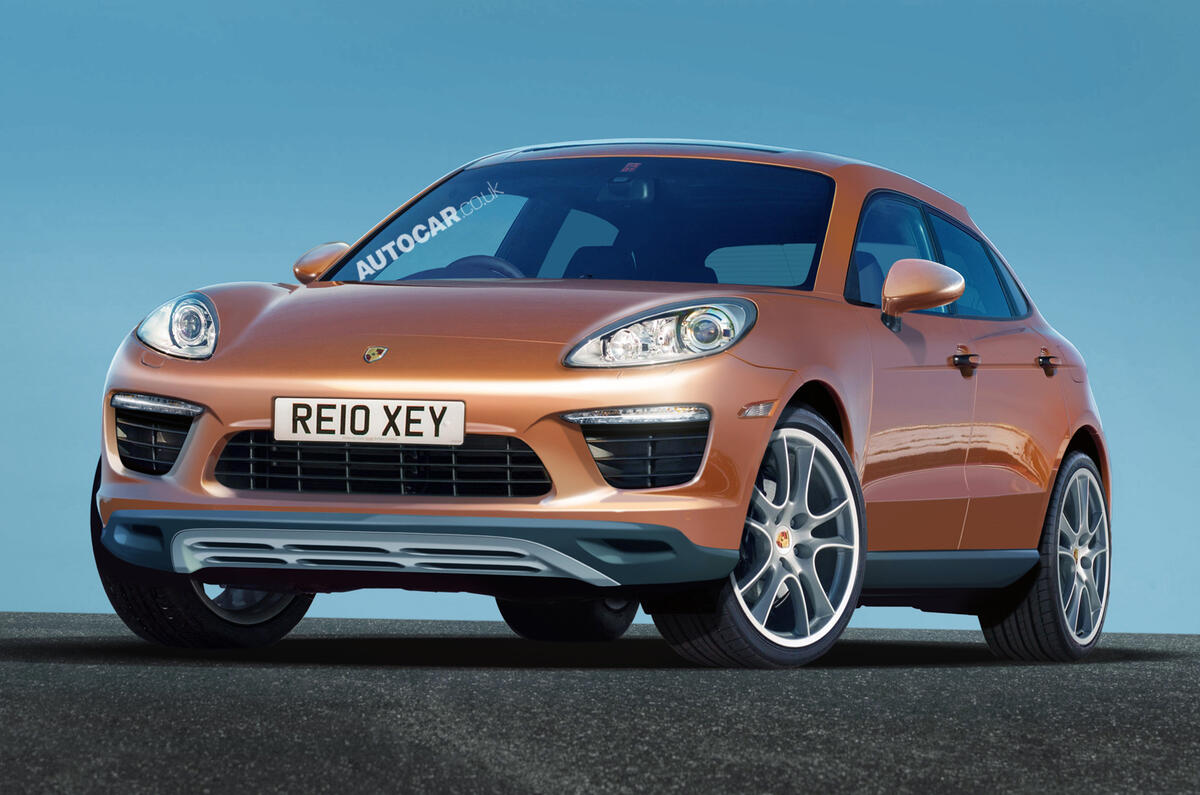Porsche is set to crown its upcoming Macan line-up with a fiery 370bhp-plus Turbo-badged range-topper that will establish a new performance 4x4 niche when it hits UK showrooms in October next year.
In the absence of dedicated performance variants of rivals such as the BMW X3 and Range Rover Evoque, Porsche expects the Macan Turbo to carve out a niche as the fastest and most dynamic model in the class — something that it achieved with the bigger Cayenne.
The top-of-the-line Macan will be the first car powered by Porsche’s still-secret new twin-turbocharged V6 petrol engine, details of which are revealed here for the first time.
Developed in-house at Porsche’s R&D centre in Weissach, Germany, the twin-turbo V6 is understood to have a 90deg vee and a capacity of 3.0 litres. It is believed to be a variant of the 3.6-litre V6 that powers entry-level Cayenne and Panamera models.
Peak power and torque are said to be in the region of 370bhp and 400lb ft thanks to twin sequential Borg Warner turbochargers, an air-to-air intercooler system and other internal modifications, including a lower compression ratio than that of the normally aspirated 3.6-litre engine. That’s an increase of about 80bhp and 105lb ft over the non-turbo 3.6.
The Macan is based on the Volkswagen Group’s next-generation large front-wheel drive and four-wheel drive platform, known as MLB. As a result, the new V6 is mounted longitudinally and drives all four wheels through an Audi-engineered, Porsche-tweaked Torsen torque-sensing differential. The rear axle features electronically controlled torque vectoring for the rear wheels to improve turn-in and cornering grip.
The choice of transmissions will be a standard seven-speed manual (a development of the latest unit in the 911) or an optional seven-speed, dual-clutch PDK automatic (also 911 derived).
The powertrain has already been undergoing intensive testing under the bonnet of inconspicuous-looking Audi Q5 and Cayenne prototypes.
Porsche’s engineers have also been working hard to provide the Macan with a more sporting character than its Q5 twin by comprehensively retuning the underpinnings.
So although the mechanical componentry — including strut front and multi-link rear suspension — is shared, the Macan gets unique elasto-kinematics thanks to specific bushes, springs and damping rates.
The same goes for its electro-mechanical steering system, which has benefited from Porsche’s experience in tuning similar hardware now used across its line-up.





Join the debate
Add your comment
Porsche Macan Off Road? Air suspension?
Vehicle tracking system,
Re: Porsche Macan blasts in with 370bhp
Eh?